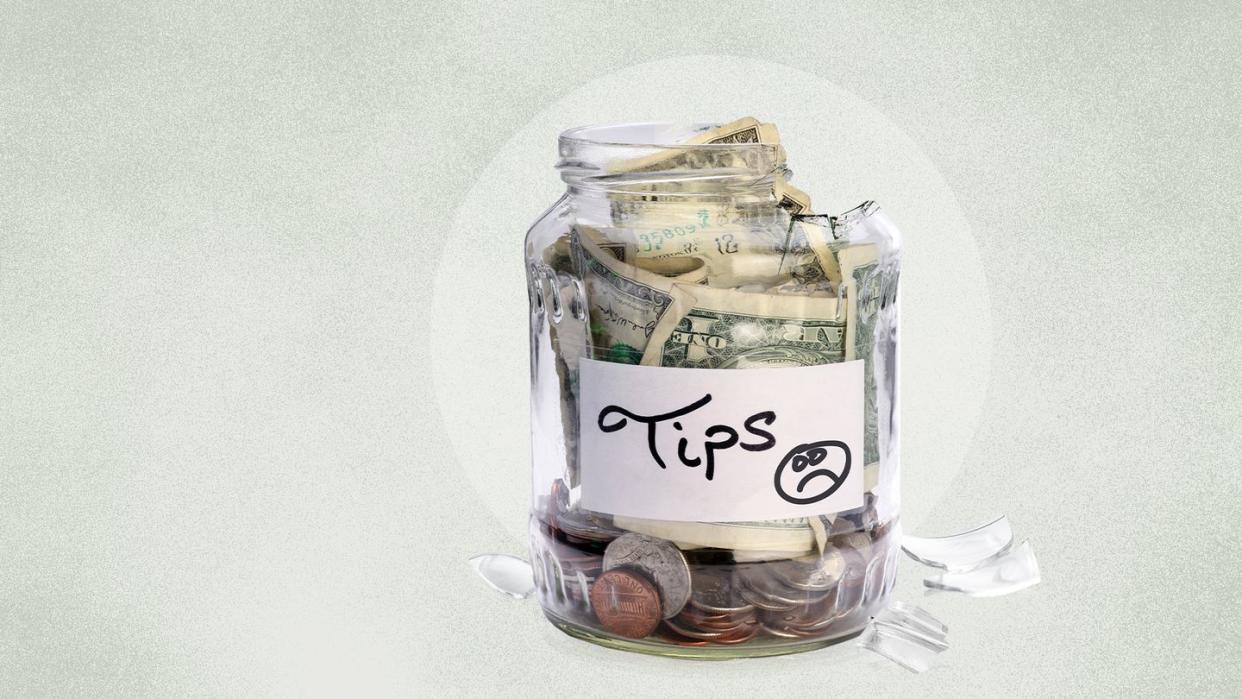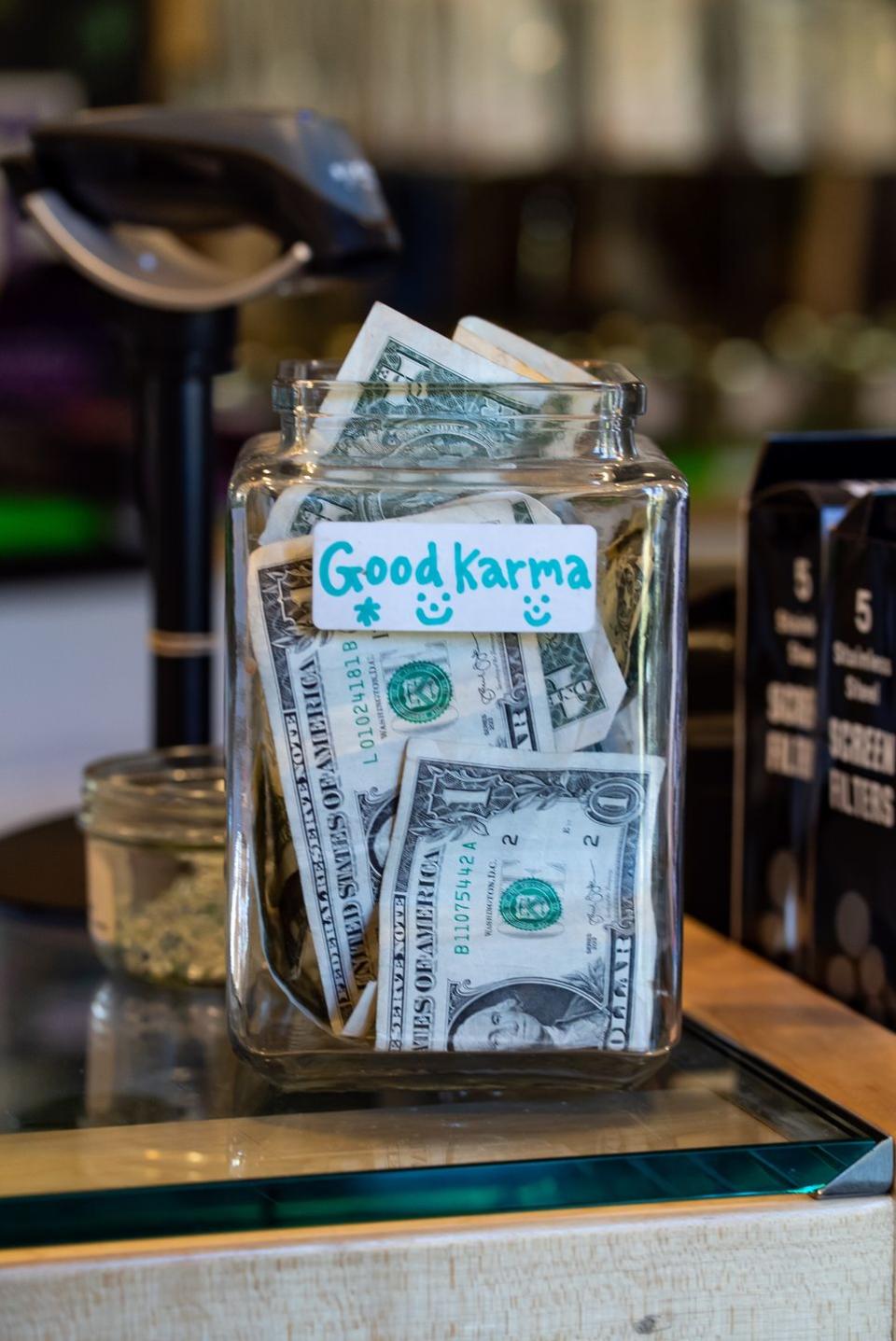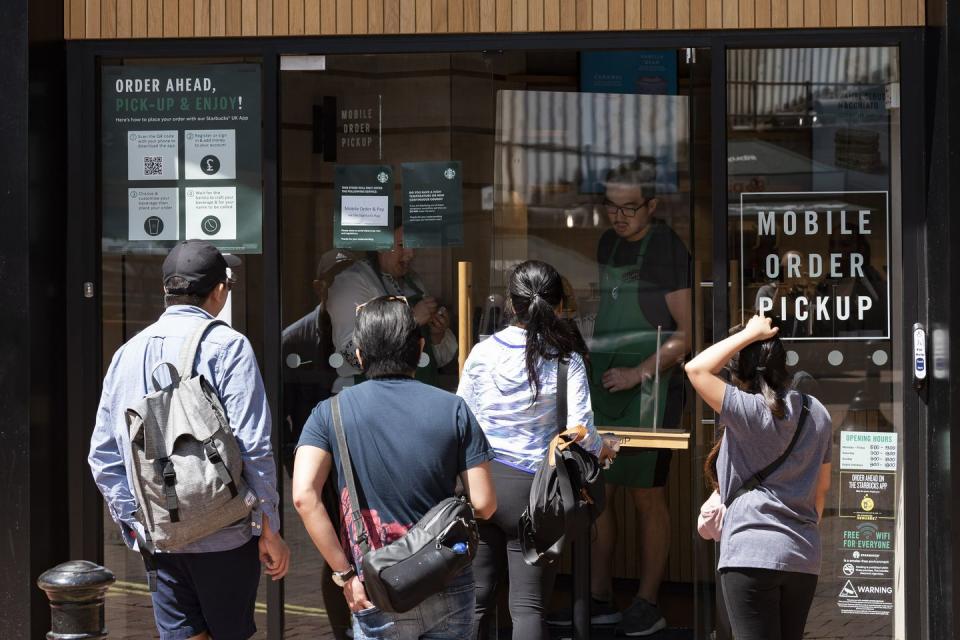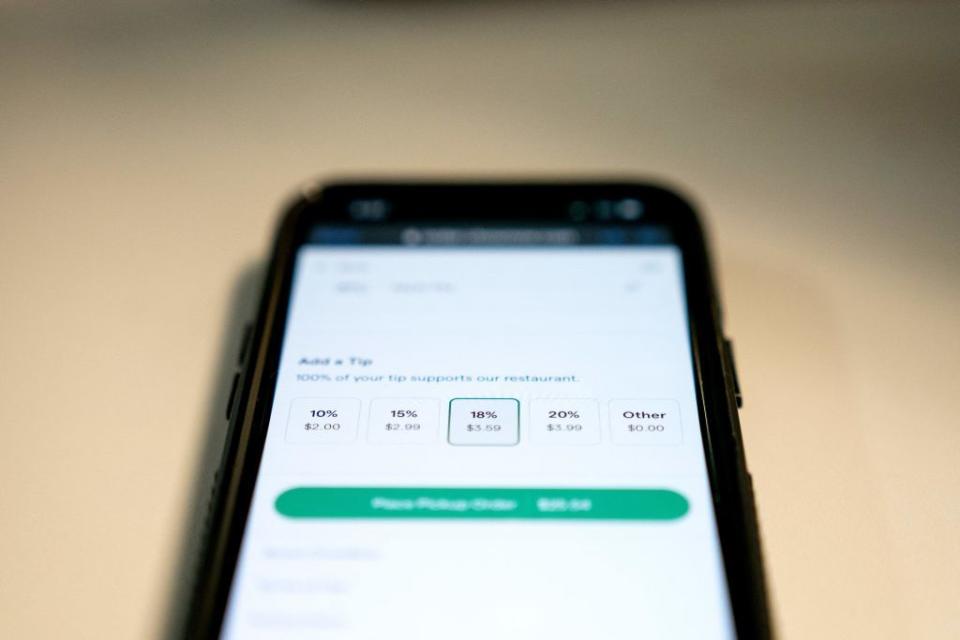Is Tipping Broken in America? A Post-Pandemic Primer

- Oops!Something went wrong.Please try again later.
During the pandemic, tipping seemed to have changed for good. In America overnight, it seemed, tipping became a way to virtue signal—to support local businesses, to show gratitude for those working on the front lines, and to assuage any guilt about still ordering delivery. To be clear: None of this is a bad thing.
But now, as the world is reopened, businesses that didn't previously have the option to tip suddenly have a digital screen at check out. Countless TikToks parody the ubiquity of these tip screens, and creators complain about the new tipping culture being out of control.
"Tipping culture isn't out of control, you guys are just assholes... is what I used to think," creator Leah Ova begins a video. "Until my parents were visiting me, and their air conditioning broke. So I drive my dad over to pick up the car and he comes back with the keys about to like, walk over to where the car is, and he's kind of distraught, which is not like him and he's like, 'I always tip, but I'm confused; and I'm like, 'What are you talking about?"
She goes on to explain that her dad paid around $500 to have his car fixed, and then the car mechanic "swivels the screen around" asking him to tip 20%, 25%, 30% of the total. Her dad, she says, always pushes a button to tip, but decided to refrain. "I think that's pushing it," Ova says.
In another video, a creator details when she bought a $2 cone from Ben & Jerry's, not thinking there was any reason to tip. The cashier gets annoyed at her, but as she says, "What were you expecting me I tip you to hand me a cone? There wasn't even a service being exchanged!"
Stories like this feel like a dime a dozen. So T&C set out to investigate: Did the pandemic actually change tipping permanently? Is tipping culture now "out of control," as they say on TikTok? Is tipping broken in America?
Lizzie Post, the great-great-granddaughter of etiquette expert Emily Post and co-president at the Emily Post Institute, believes there's numerous reasons tipping has changed in 2023. "Tipping really didn't change that much," Post says of tipping habits during the pandemic, "we just did a lot of encouraging to tip more."
Tipping feels different now, Post tells Town & Country over Zoom from her home in Vermont, because "we got conditioned to be encouraged to give money." She explains, "We had a really heavy encouragement to tip as much as we possibly could during the lockdowns of the pandemic because we wanted our neighborhood places to survive. That was a beautiful come together type of spirit and moment. We at Emily Post had to really hammer home that this is a 'if you can' [situation]; the reality is just not everybody lives the kind of life where something over 15 or 20% is possible for them all the time."
The second part of why tipping seems to have changed: it is now an option in so many different places where it was not previously an option, thanks to the ubiquity of digital tip screens. "We went from having a lot of incidental tipping and discretionary tipping, that tip jar moment, to being a digital question right in front of you that's asking you: 'Are you going to participate in this thing?' That's a lot more pressure than it used to be," Post says.

Michael Lynn, a professor of consumer behavior and marketing at the Cornell University School of Hotel Administration, has also seen a shift in the culture of tipping in the U.S., one sparked by a combination of the digital screens and the pandemic. "It sure seems anecdotally like more and more people are asking [for tips], and you have to believe that Covid had something to do with that. There is data showing that people started tipping larger amounts during Covid," Lynn tells T&C.
The electronic screens absolutely impacted this. "Electronic devices now are asking for tips in a way that they didn't before. More and more counter workers are asking for tips, but we've had counter workers asking for tips for a long time—it was just in the form of a tip jar," he says.
There's a huge difference between a digital screen and a tip jar. With a tip jar, Lynn explains "failure to tip is passive. But failure to tip when you're faced with these digital screens requires that you actively press a 'no tip' button. That difference between a sin of commission and a sin of omission is one of the differences." The bigger difference, Lynn notes, is that "tip jars contain information about what other people are doing. You see people put money in or not, and you see how full the tip jar is and that gives you some indication of what others are actually doing. With the digital screens, that's not true, it's not as easy to see what people hit on a screen, and there's no record of cumulative effect of other people's behavior that's visible."

Fear of judgement, and how we're being perceived by others, weighs heavily on tipping. Post says, "We hear from people that they really fear that moment of being judged by the people behind them and the person at the counter." Post-pandemic, she adds, "We're a little more anxious being out in the social world again. We feel a lot of, 'oh I should always give more' and we're always told we should give more if we have more. There's a lot of guilt and pressure that gets put into it."
The root of the guilt surrounding tipping, Post believes, stems from the knowledge that these workers may not be making livable wages. "We somehow fear some worker is going to call us out for using their service and that they don't make enough," she says. "That's really a discussion between the worker and the boss, and a discussion between us and our legislatures." Purchasing a coffee and not tipping 50% is okay, Post emphasizes. "We're taking on too much in that moment," she says.
"If everyone's supposed to be getting a livable wage, then you shouldn't need a service tip," Post says. "Maybe our muffins need to be $7, maybe that's what a muffin costs— if it means that what it costs to pay the people and to keep the lights on!"
Tipping gets at "what's important to people," Lynn says. "We care what other people think of us. Tipping creates a lot of anxiety around that." He explains what goes through a customer's mind when faced with a tip screen: This person is asking me for a tip, they clearly want it. Their approval is contingent on how much I give. And at the same time, I obviously I wanna save the money. I wanna have other uses for it. Even if it was just this one person, I'd be happy to tip. The problem is it's everybody who's doing it, and I can't afford to tip everyone this much and yet, I don't want to lose their respect or approval.
Tipping is so fraught, he explains "because we care so much about what others think of us."

Customers should feel empowered to tip, or not, at their discretion—not because a screen is asking them. Because now that tip screens are everywhere, they're not going away any time soon. "We hear from vendors that just putting the option to tip increases the amount that they receive so much that they don't want to go back," Post says. "My impression is the frustration of the consumer will eventually create the desirable situation of creating a no tip environment for the customer as a luxury. That feeling of, I don't have to leave a tip, that's amazing."
Maybe the future of tipping is just that. To be clear, you should absolutely keep tipping. (Especially, this time of year, holiday tips.)
But maybe, just maybe, tipping is so broken—because of the pandemic, digital screens, inflation, our fear of judgement, you name it—that services will start offering all-inclusive prices. That's a switch that would make the customer feel like they're getting a deal, like it's a luxury, even when they're just paying the same amount.
You Might Also Like

